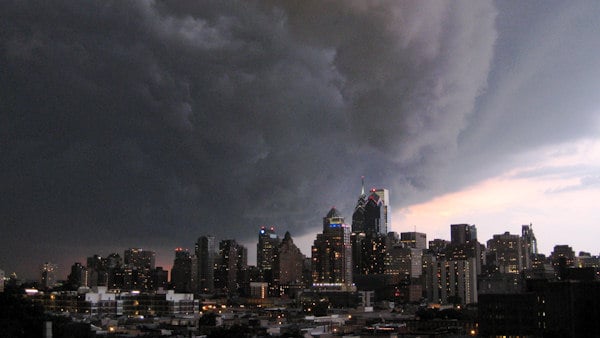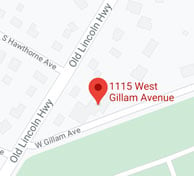
There’s nothing quite like that annoying, disappointing feeling of losing power -- or, what's worse: sitting around wondering when it will come back. For most of us, this seems like something that has been happening in the Delaware Valley a lot more often than it used to, but people do tend to mythologize the past. So, are we really experiencing more outages lately?
According to federal data and Climate Central it most certainly is happening more often. In fact, the US power grid loses power 285% more often -- a ten-fold increase -- than in 1984. That’s right -- way back when we were playing ColecoVision, lining up to see Ghostbusters at the local movie house, or listening to Bananarama, our power grid was much more reliable than it is today.
What's Causing the Increase in Blackouts?
So, what’s up with that? How is it possible that blackouts are that much more frequent in this fancy digital future that we live in? And, what’s causing them? Well, it turns out that there are many factors leading to the increasing power outages, but here are the main ones.
Weather
In the 2000s, weather related power outages increased exponentially. The climate is changing and extreme weather is becoming the new norm. The Northeast US has seen a 74 percent increase in heavy precipitation since the late 1950s, and Pennsylvania and Ohio were tied with the fourth most weather related power outages among states between 2003-2012.
We’ve also seen the two largest blackout inducing storms in PECO’s history within the last few of years. Superstorm Sandy caused approximately 850,000 PECO customers to lose power in 2012. After that, the ice storm of February 2014 weighs in at a hefty 715,000 effected.
Pennsylvania, New Jersey, and Delaware are included in a region that accounts for 42% of the nation’s outages.

Infrastructure
The US power grid was built after World War II and could be considered the largest machine on earth. That’s pretty impressive! And although it was overbuilt to due anticipated growing demand, it's beginning to reach capacity and the life of the old equipment is quickly dwindling, says a Popular Science article.
Unfortunately, an outdated grid means a higher likelihood of outages, and a growing need for utility companies to respond to the issue.
Other factors
Weather and infrastructure are definitely the biggest culprits when it comes to blackouts, but other offenders may include cyber attacks and terror attacks. According to an article from NDIA, "the United States power grid is increasingly vulnerable to cyber-attacks, but the scale of power outages that could be caused by these attacks are difficult to predict."
It should also be noted that the demand for electricity has grown by 10 percent over the last decade. Increasing reliance on electronic devices and hotter summers in the southern states could be to blame, as well.
Additionally, according to PECO, one-third of the outages in their coverage area are directly related to vegetation. PECO spends about $37 million a year clearing trees and other pervasive vegetation during a five-year trimming cycle.

So, now what?
Now that we know what's causing our power interruptions, is there anything being done about it? The industry is, slowly, making strides towards upgrading to smart grid technology. The smart grid would bring much needed benefits that include self-healing, resiliency against physical and cyber attacks, and quality power for 21st century needs.
Wide implementation of smart grid technology is still some years away. Meanwhile, there remains that pesky problem of power outage potential whenever a major storm system rolls through. For now, the best way to prevent a powerless home is by making your own electricity with a generator.
One of the nice things about living in our fancy digital future is that a generator can be hooked up directly to your home. That means no messy extension cords and, more importantly, no annoyance from waiting on the power to come back.
The best plan for now is still good old fashioned preparedness. Make sure you have a plan and the supplies you need for the next time that major storm is in the forecast.
For some helpful preparedness tips, click the button below to download our Lights Out Checklist. There are some handy tips and reminders for things to do leading up to a major storm and supplies to gather before the storm hits.
You can also visit our Generators page to learn more, or schedule a free generator estimate.






